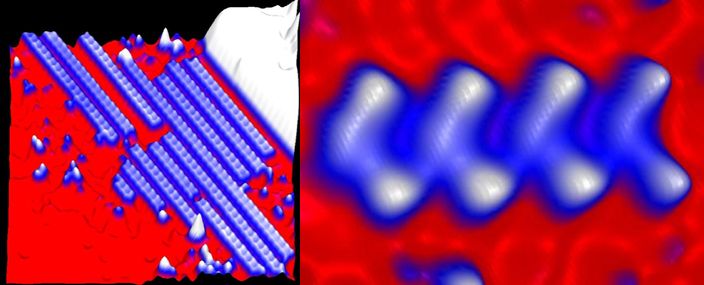Found: Smallest Superconductor Ever; Could Enable Next-Gen Nanoscale Electronics
Honey, I shrunk the superconductors

Scientists have created the world’s smallest superconductor, from a sheet of four molecule-pairs less than a nanometer wide. That’s far smaller than the head of a pin — which stretches across a million nanometers — and more on the order of a DNA molecule, which is about 2 nanometers wide.
Superconductivity has been considered a large-scale phenomenon ever since its discovery in 1911. But the new study by Ohio University scientists suggests that nanoscale superconducting wires could become a very real possibility for powering tiny electronic devices or other energy applications.
“Researchers have said that it’s almost impossible to make nanoscale interconnects using metallic conductors because the resistance increases as the size of wire becomes smaller,” said Saw-Wai Hla, a physicist at Ohio University. “The nanowires become so hot that they can melt and destruct.”
Getting around that problem required Hla and his colleagues to create molecules of an organic salt known as (BETS)2-GaCl4, and put it on a surface of silver. They also had to cool the molecules down to around 10 Kelvin (-263 degrees Celsius). But the scientists hope to test other materials that could form nanoscale superconducting wires at less chilly temperatures.
Perhaps just as crucial, the study showed that superconducting organic salts could grow on a substrate material such as silver — good to know for possibly manufacturing the nanoscale electronic circuits on a large scale.
Electronic circuits have already become much more flexible and smaller, in applications ranging from wearable clothing to stick-on heart or brain sensor arrays. The future advent of tiny superconductor wires should only speed up development of nanoscale electronics.